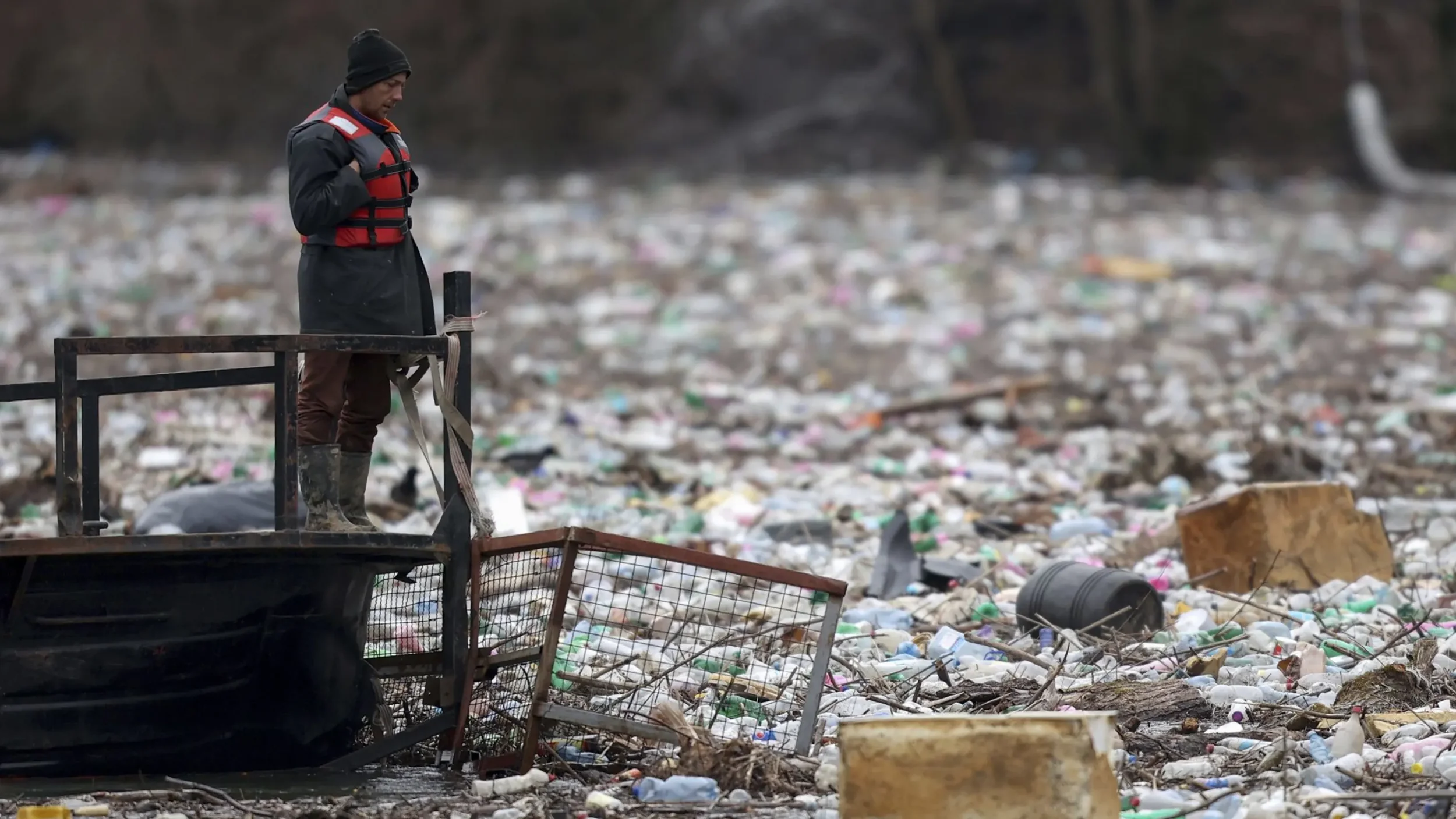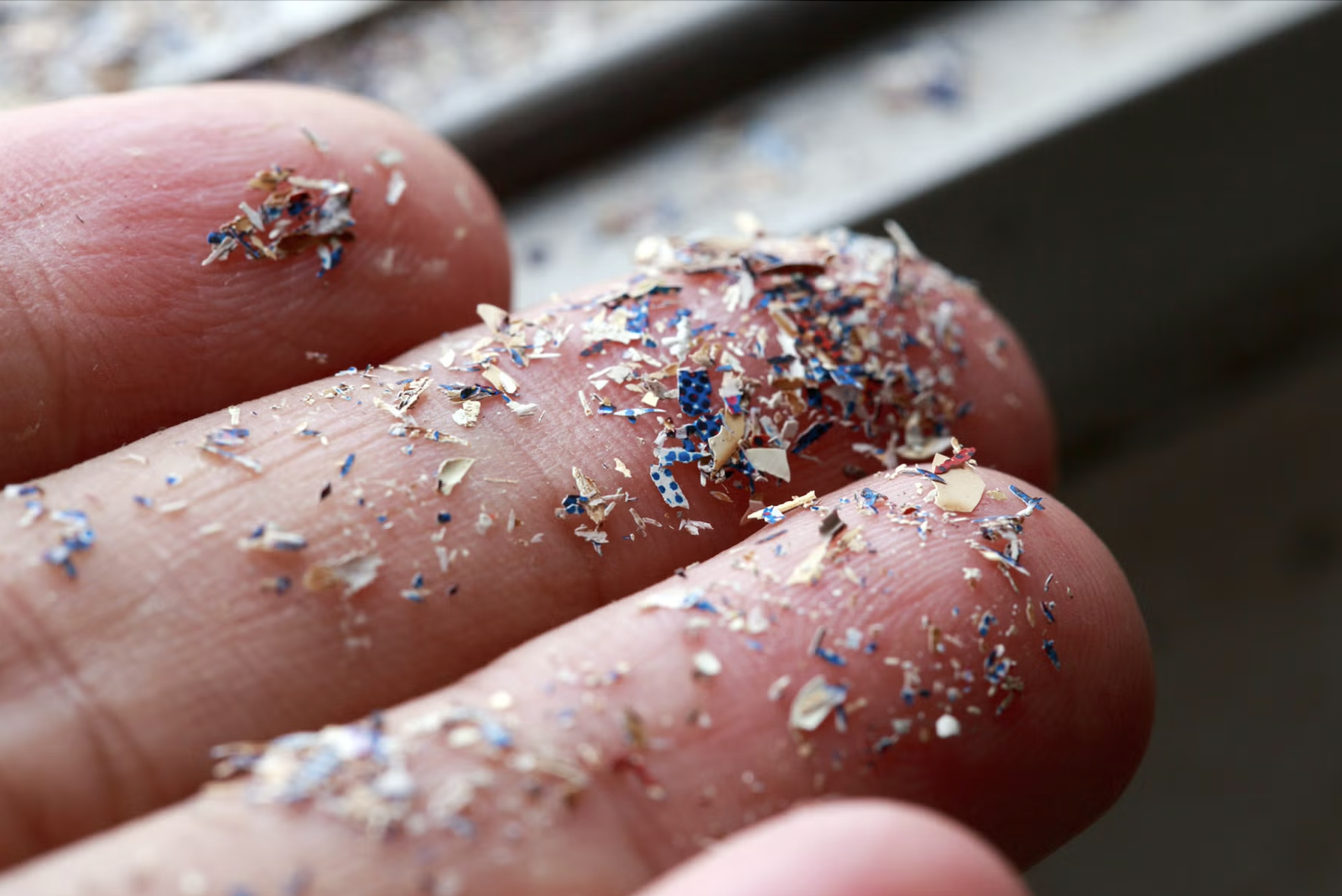Goodbye Plastic.
Hello Plants.
The Bio Poncho and packaging material is certified compostable by the European Standard EN13432.
Made from renewable cornstarch, it is 100% biodegradable, compostable, plant-based and plastic-free, making it the most sustainable poncho worldwide.
What is the Bio Poncho?
Why The Bio Poncho?
-
Crafted from 100% GMO-free cornstarch, the Bio Poncho is entirely carbon-neutral and naturally renewable. Being plant-based, it contains none of the harmful petrochemicals found in traditional plastic ponchos, making it the safest poncho for both you and the environment.
-
The Bio Poncho embodies a virtuous "from nature to nature" cycle. Made from organic matter (cornstarch), it will break down into natural components like water, CO2, and biomass. Magically returning to the earth as nutrient-rich compost, leaving no toxic residues or polluting microplastics behind.
-
Unlike traditional plastic ponchos, which often feel clammy and trap heat, the Bio Poncho is designed for maximum breathability and comfort. Its velvety-soft texture feels great against the skin, and its enhanced elasticity and durability ensure it fits better in windy conditions making it far less likely to tear.
-
Every year, humanity produces
430 million tonnes of plastic.
Annually, that’s about the same weight as…
Latest Blog Articles
-
Plastic ponchos are made from fossil fuels like crude oil and natural gas which are the same non-renewable resources driving climate change. Designed for single use, they’re often discarded after just one wear, creating an immediate plastic waste problem.
Most end up in landfills, oceans, or scattered across the environment, where they persist for hundreds of years. A single-use convenience shouldn’t have a centuries-long impact.We built a quick tool that illustrates what happens to plastic ponchos after they've been disposed of and how many will be recycled, incinerated, end up in a landfill, or mismanaged/uncollected. Here's the link.
-
They can take up to 500 years to break down, and even then they never truly disappear. Instead, they fragment into microplastics: tiny particles less than 5 millimetres in size that contaminate soil, waterways, and the food chain for generations.
Microplastics are now a growing public health concern. They’ve been found in drinking water, food, marine life, and even inside our bodies, making them a lasting and invisible threat to our planet.
-
The Bio Poncho is 100% plant based, made entirely from cornstarch, and certified for home and industrial composting. The Bio Poncho is the most sustainable poncho worldwide and is entirely carbon-neutral made from renewable resources.
Many of our customers have made the switch to our Bio Poncho because it's truly circular. Made from 100% organic matter (cornstarch), once disposed of, it naturally breaks down into nutrient-rich compost without leaving behind any toxic residues.
Beyond its sustainability benefits, the Bio Poncho is also highly preferred for its velvety-soft texture, improved breathability and superior comfort.
Its enhanced elasticity and durability ensures it fits better in windy or active conditions, and is far less likely to tear.
-
This is a question we get asked a lot, so we wrote an article about it. While some plastic ponchos may be technically recyclable, that doesn’t make them sustainable, nor should it be the goal.
In reality, “recyclable” is often more of a marketing term than a real solution. Most plastic ponchos are single-use, and the vast majority are never recycled. Globally, only 9% of plastic is recycled annually. In the United States it’s 5%, in Australia 12.5%, and in Canada 16%.
Despite good intentions, even dedicated recycling programs fall short. Guests can take ponchos home and discard them later, and clearly marked bins still depend on proper collection, sorting, and processing, which are all outside an operator’s control.
Even when plastics are recycled, up to 98% are downcycled into lower-grade products that can only be reused once or twice before degrading and leaking into the environment. The perceived success of recycling creates a false sense of security, distracting from the deeper issue: our over-reliance on single-use plastics.
Plastic Poncho Lifecycle
Raw Material Extraction
Made from petroleum, crude oil and natural gas, both non-renewable fossil fuels.Production
Energy-intensive manufacturing that adds significantly to greenhouse gas emissions.Use
Designed for single-use, uncomfortable, often clammy, traps heat, and quickly discarded.End of Life
Most end up in landfill, oceans, or as litter, persisting for centuries and releasing toxic petrochemicals and harmful microplastics. Even with a perfect 100% recycling rate, the material stays in the plastic cycle, requiring more extraction and production.Bio Poncho Lifecycle
Raw Material Extraction
Made from 100% plant-based cornstarch, a naturally renewable and carbon-neutral resource.
Production
Manufactured with significantly less energy than petroleum-based plastics, resulting in a much smaller carbon footprint.Use
Comfortable, breathable. Its improved elasticity and durability also ensures it fits better in windy or active conditions, and is far less likely to tear.End of Life
Naturally breaks down into nutrient-rich compost, leaving behind no toxic residues or harmful microplastics.The Difference:
Plastic: Starts with fossil fuels → ends as pollution.
Bio Poncho: Starts with plants → ends as compost.
Our goal is not to dismiss the role of recycling. It is a well-intentioned effort and better than nothing. But a recyclable plastic poncho is far from a sustainable solution. It is a continuous loop of production, single use, quick disposal, and a hopeful yet imperfect recycling attempt outside of anyone’s control. This cycle demands constant production of new plastic ponchos, keeping us reliant on the extraction of finite fossil fuels.
The Bio Poncho on the other hand offers a truly circular solution. Made completely from cornstarch, it is more comfortable and durable, which encourages reuse. Once disposed of, it naturally returns to its organic components such as water and CO₂, completing a “from nature to nature” cycle. It leaves behind no harmful chemicals or microplastics, eliminates the plastic waste problem entirely, and addresses sustainability at its root.
-
In reality, almost anything will biodegrade eventually, given enough heat, moisture, microbial activity, and time, which can still mean centuries in a landfill.
Biodegradable plastic ponchos are designed to break down faster than traditional disposable plastic ones. The issue is its lack of clear rules. There are often no standardized requirements for how long the breakdown should take, what conditions are needed, or what the final byproducts will be.
Without clear context, these claims of biodegradability can be misleading. Much like “recyclable,” they often sound greener than they actually are, and don’t help solve the problem.
-
Absolutely. The Bio Poncho is generally the same thickness as a traditional plastic poncho and matches it in strength and waterproof protection.
It’s also more elastic which means it moves with your body, fits better in windy or active conditions, and is less likely to tear, making it more durable and ideal for repeated use. -
Absolutely not! It won’t melt off you in the rain — it offers the same waterproof protection as a normal plastic poncho while you’re wearing it. The shelf life is approximately 12–18 months whether it’s worn once or dozens of times. After that point it will begin to break down naturally, and in composting conditions it will break down even faster.
We also clearly state on our packaging to ‘retain and reuse’ the poncho and its packaging, encouraging guests not to treat it as a single-use item. -
Yes, you won’t find a more comfortable poncho than The Bio Poncho. Thanks to its velvety-soft texture it’s extremely breathable and feels incredible against the skin.
There's no clammy, sticky, or overheating commonly caused by traditional plastic ponchos which trap heat and humidity. -
The Bio Poncho is designed to break down naturally, which means it has a limited shelf life. If stored in a cool, dry place, it can last up to 18 months before it starts to decompose. In comparison, a plastic poncho will last indefinitely, so if you’re looking to store the poncho for many years without using or selling it, the Bio Poncho may not be the best option.
That said, most people buy ponchos when they need them, often for single-use or short-term situations. In those cases, the Bio Poncho is the more sustainable, more comfortable, and far better choice.












